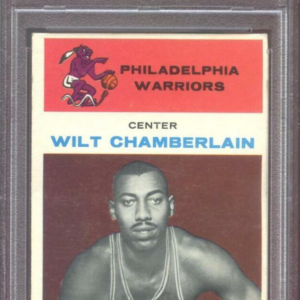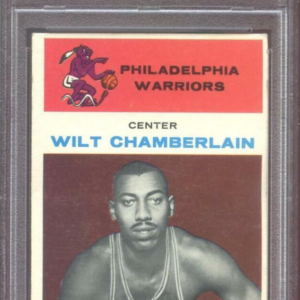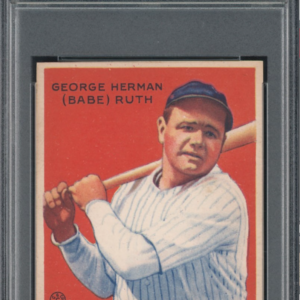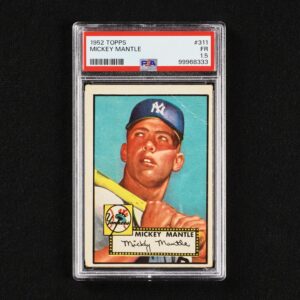The world of basketball card collecting has been embroiled in a spirited debate for years: which trading card is Michael Jordan’s true rookie card? The contenders for this coveted title are the 1984-85 Star #101 and the 1986-87 Fleer #57. This highly contested debate delves into not only the search for a rookie card, but also the evolution of the trading card industry, concerns about authenticity, and the changing standards of grading companies.
1984-85 Star #101: A Limited Distribution Gem
The Star #101 Michael Jordan card was released in 1984, the same year Jordan began his NBA career with the Chicago Bulls. This particular card had a limited distribution, primarily through team sets rather than the conventional pack form. This unique distribution method is a crucial factor in the card’s classification and its standing in the debate.
1986-87 Fleer #57: The Traditional Rookie Card
The Fleer #57 Michael Jordan card, released in 1986, is widely regarded as Jordan’s official rookie card. The Fleer set was widely distributed and made available in packs, adhering to the traditional model of trading card distribution.
The XRC Designation: Star #101’s Peculiar Status
The Star #101 card is often referred to as an XRC, or extended rookie card. This classification stems from its limited distribution and the fact that Star Company cards were not widely available in retail stores. XRCs typically precede a player’s first widely released card, which, in the case of Jordan, would be the Fleer #57.
PSA’s Reluctance and the Problem of Counterfeit Cards
Professional Sports Authenticator (PSA), a leading grading company, has been hesitant to grade Star cards, including the 1984-85 Star #101 Michael Jordan card. This reluctance is primarily due to the prevalence of counterfeits in the market and the challenges faced in determining their authenticity. However, in recent years, PSA has started grading Star cards, recognizing their significance in the sports card market and adopting advanced authentication techniques.
The Debate: Historical Significance vs. Traditional Definitions
The argument for the Star #101 card being Jordan’s true rookie card relies heavily on its historical significance. It was the first card to feature Jordan as an NBA player and was produced closer to his actual rookie year. On the other hand, the Fleer #57 card aligns with the conventional definition of a rookie card – widely distributed and available in packs for the general public.
Market Perception and Value: Fame vs. Rarity
Market perception plays a vital role in this debate. The Fleer #57 card is more widely recognized and sought after by collectors, often commanding higher prices in the market. Its popularity is partly attributed to Fleer’s industry standing and the card’s wider availability.
The complex debate surrounding Michael Jordan’s true rookie card – the 1984-85 Star #101 or the 1986-87 Fleer #57 – reflects the intricacies of the sports card collecting world. It encompasses historical context, distribution methods, and the evolving standards of card grading. While the Fleer #57 is widely accepted as Jordan’s rookie card, the Star #101 holds historical significance, offering a captivating glimpse into the early days of Jordan’s legendary career and the complexities of sports memorabilia collecting.
Impact on Collectors and Investors: A Matter of Perspective
The debate between the Star #101 and Fleer #57 cards significantly impacts collectors and investors. For traditionalists and historians, the Star #101 card holds a special place as it coincides chronologically with Jordan’s entry into the NBA. In contrast, investors and mainstream collectors often favor the Fleer #57, considering it the “official” rookie card due to its wide distribution and general recognition.
Authenticity and Grading Challenges: The Quest for Trustworthy Cards
The issue of authenticity, particularly with the Star #101 card, cannot be overstated. Counterfeit cards have flooded the market over the years, making authentication a crucial and arduous process. PSA’s decision to grade Star cards has provided a new level of legitimacy, but it has also sparked debates regarding grading standards and the identification of genuine cards.
The Role of Distribution in Card Recognition: A Unique Distribution Method
The distribution method of the Star #101 card – through team sets rather than traditional packs – plays a significant role in the ongoing debate. Some argue that this distribution approach makes it less of a “true” rookie card compared to the Fleer #57, which follows the familiar standard of trading card distribution.
The Evolution of the Sports Card Market: Changing Perceptions
This debate also highlights the evolution of the sports card market and the evolving parameters of what constitutes a rookie card. The Star #101 card represents a period in the card industry when distribution and marketing differed significantly from the time of the Fleer #57 release. As the market progresses, so do the perceptions and definitions within it.
The Verdict: A Matter of Personal Preference
Ultimately, the determination of Michael Jordan’s true rookie card may come down to personal preference and interpretation. The Star #101 card holds historical significance and offers a direct connection to Jordan’s rookie season. On the other hand, the Fleer #57 card provides a more traditional and widely accepted rookie card experience. Both cards are invaluable pieces of basketball history and hold a special place in the realm of sports memorabilia.
Future Implications: An Evolving Landscape
As the debate rages on and PSA continues to grade more Star cards, the market may witness shifts in the value and perception of these cards. Collectors and investors must remain informed and adaptable as the landscape of sports card collecting continues to evolve. Regardless of which side one falls on in the debate, both the 1984-85 Star #101 and the 1986-87 Fleer #57 Michael Jordan cards remain iconic representations of one of basketball’s greatest players and serve as a testament to the dynamic nature of sports memorabilia collecting.






